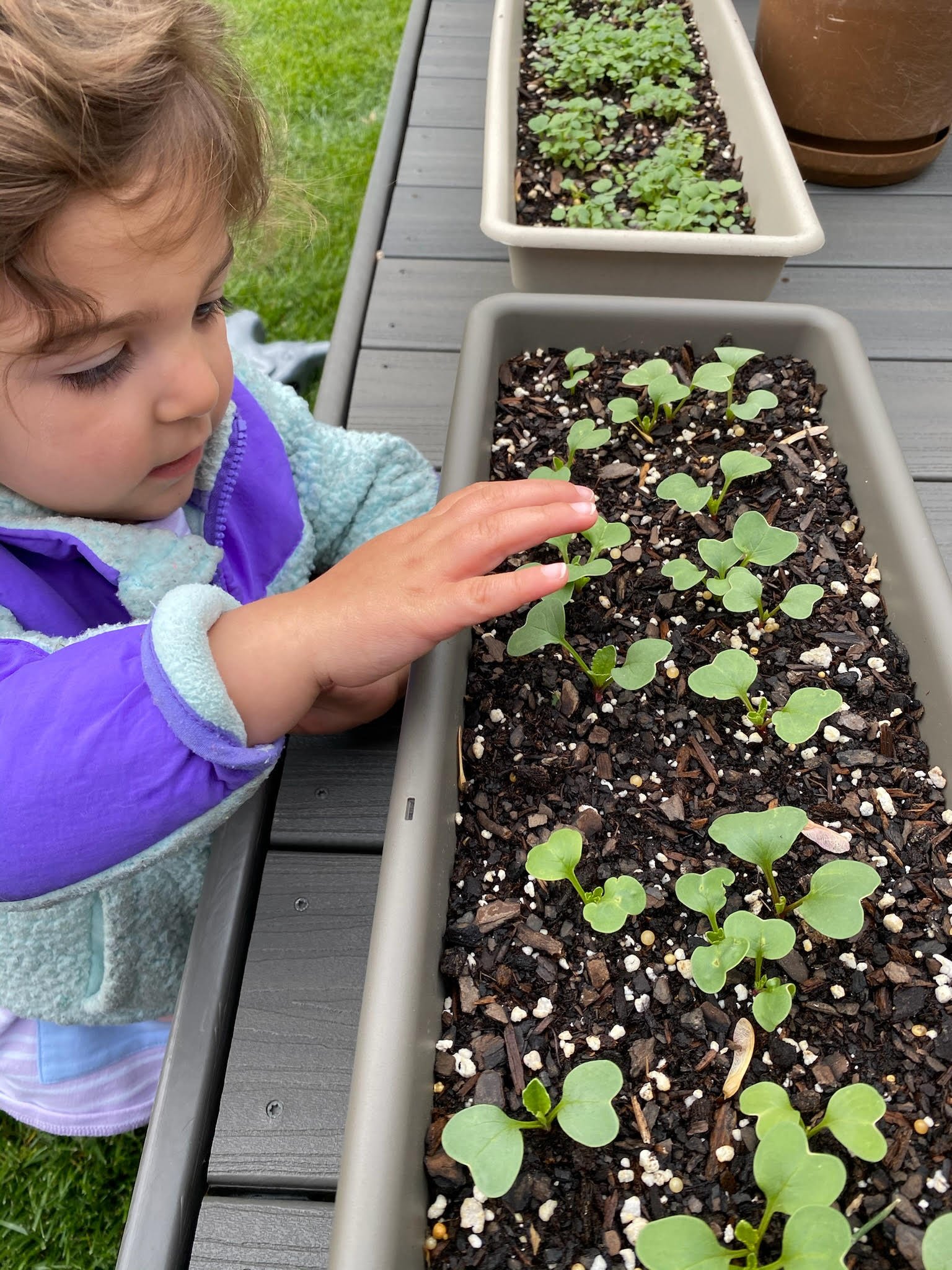CROP GUIDE
Click below to access a comprehensive guide detailing space requirement, time-commitment, age-suggestion and how to harvest
How to Engage the Senses when Gardening with Kids
SMELL
From soil/compost to the finished product (veggies! fruit!) there are so many smells involved in gardening. Talk about what your child is smelling - is the smell strong or weak? Do you like that smell?
SIGHT
Children make so many observations with their eyes. Look at seeds - which plants have small seeds? Which ones have big seeds? Look at the leaves on the plants - Are they thin or thick? Are they long or short? Talk about the fruits/veggies/flowers you are growing - what color are the petals? How can you tell that a tomato is ripe just by looking at it? How can you tell that something is a weed?
TASTE
Engage in some taste-testing! Does basil taste sour or sweet? Which veggie does your child think tastes best? In our opinion, there’s nothing that tastes better than a tomato fresh off of the vine.
TOUCH
Children, especially little ones, love to touch EVERYTHING. Have your child run their fingers through the soil. How does it feel? Is it rocky? Is it wet? Feel the leaves on the plants - do they feel velvety or rough? How does it feel when you pull a weed from the ground?
HEARING/SOUNDS
Have your child close their eyes and ask them what they hear...birds flying by? Squirrels pitter pattering through the garden?
When watering your plants - listen to the water hitting the plants. When you bite into a carrot you’ve grown - do you hear the crunch?
Gardening Supplies
Seed Savers Exchange: amazing and unique varieties of heirloom vegetables and flowers, each with its own story that is shared on the website and in the catalog. Older kids will enjoy learning about their collaboration with indigenous groups on the seed rematriation project. They also have great gardening tips on their site.
High Mowing: a comprehensive catalog of organic and non-GMO vegetables, flowers, and cover crops. They also sell some seed starting supplies if you’d rather order online than visit your local garden center. They also offer bundles of seeds if you want to just get a set (for example, “Kid’s Garden Organic Seed Collection”) rather than selecting individual varieties.
Eden Brothers: in addition to vegetables and flowers, Eden Brothers offers bulbs for tulips and daffodils, which may not be edible but they are beautiful and fun! They also offer native seed mixes (though check your area to make sure you are buying a mix native to where you live). Their Plant Finder tool can be useful to help you narrow in on suitable varieties to grow.
Your Local Garden Center: the best source for basic gardening supplies (such as a trowel, a plastic tray or compostable pots for starting seeds (once you graduate from using egg cartons), a watering can, and topsoil is your local garden center. This is also where you can buy any plants you want to use. Be sure to ask if they are pre-treated with pesticides or fungicides- especially if your kids are helping you out in the garden.
READING LIST
A great way to prepare your children for gardening and increasing their awareness of plants and flowers is to read books! Here are some of our favorites (check and see if they’re available at your local library!):
“Jack’s Garden” by Henry Cole
“Growing Vegetable Soup” by Lois Ehlert
“Compost Stew - an A to Z Recipe for the Earth” by Mary McKenna Siddals
“Up in the Garden, Down in the Dirt” by Kate Messner
“Planting a Rainbow” by Lois Ehlert
“I Took A Walk” by Henry Cole
“The Earth Gives More” by Sue Fliess
“Thank you, Earth: A Love Letter to our Planet” by April Pulley Sayre
“Eating the Alphabet” by Lois Ehlert


